Research on the Mechanism and Control Strategy of Microbubble Cleaning Sludge
Abstract
:1. Introduction
2. Mechanism of Bubble Migration and Evolution in the Cleaning Process
2.1. Numerical Simulation of Bubble Migration and Evolution
2.1.1. Basic Theories
- (a)
- Governing equations
- (b)
- Dynamic model of bubbles near the solid wall
2.1.2. Numerical Model
2.1.3. Morphological Evolution of Bubbles
2.2. Dynamic Behavior Analysis of Free Field and Near-Wall Bubbles
2.3. Characteristics of Flow Field around Bubbles
3. Control Strategy of Bubble Cleaning Technology
3.1. Influences of Driving Pressure
3.2. Influences of Liquid Temperature
3.3. Influences of the Number of Bubbles
- (a)
- Analysis of the collapse process of different numbers of bubbles
- (b)
- Analysis of the collapse process of the bubble group
3.4. Influences of Bubble Distribution
4. Conclusions
Author Contributions
Funding
Conflicts of Interest
References
- Bo-han, Z.; Xiao, X.; Qiang, Y. Effect of bubble size on cleaning of oil and particles on solid surface. Chin. J. Environ. Eng. 2021, 15, 375–382. [Google Scholar]
- Sarasua Miranda, J.A.; Ruiz-Rubio, L.; Aranzabe Basterrechea, E.; Vilas-Vilela, J.L. Non-Immersion Ultrasonic Cleaning: An Efficient Green Process for Large Surfaces with Low Water Consumption. Processes 2021, 9, 585. [Google Scholar] [CrossRef]
- Ohl, C.-D.; Arora, M.; Dijkink, R.; Janve, V.; Lohse, D. Surface cleaning from laser-induced cavitation bubbles. Appl. Phys. Lett. 2006, 89, 074102. [Google Scholar] [CrossRef]
- Zevnik, J.; Dular, M. Liposome destruction by a collapsing cavitation microbubble: A numerical study. Ultrason. Sonochem. 2021, 78, 105706. [Google Scholar] [CrossRef] [PubMed]
- Kim, H.; Sun, X.; Koo, B.; Yoon, J.Y. Experimental Investigation of Sludge Treatment Using a Rotor-Stator Type Hydrodynamic Cavitation Reactor and an Ultrasonic Bath. Processes 2019, 7, 790. [Google Scholar] [CrossRef]
- Chahine, G.L.; Kapahi, A.; Choi, J.K.; Hsiao, C.T. Modeling of surface cleaning by cavitation bubble dynamics and collapse. Ultrason. Sonochem. 2016, 29, 528–549. [Google Scholar] [CrossRef] [PubMed]
- Tian, Z.L.; Liu, Y.L.; Zhang, A.M.; Tao, L.; Chen, L. Jet development and impact load of underwater explosion bubble on solid wall. Appl. Ocean Res. 2020, 95, 102013. [Google Scholar] [CrossRef]
- Hsiao, C.T.; Choi, J.K.; Singh, S.; Chahine, G.L.; Hay, T.A.; Ilinskii, Y.A. Modelling single- and tandem-bubble dynamics between two parallel plates for biomedical applications. J. Fluid Mech. 2013, 716, 137–170. [Google Scholar] [CrossRef]
- Miyamoto, M.; Ueyama, S.; Hinomoto, N.; Saitoh, T.; Maekawa, S.; Hirotsuji, J. Degreasing of Solid Surfaces by Microbubble Cleaning. Jpn. J. Appl. Phys. 2014, 46, 1236–1243. [Google Scholar] [CrossRef]
- Agarwal, A.; Liu, Y. Enhanced microbubbles assisted cleaning of diesel contaminated sand. Mar. Pollut. Bull. 2017, 124, 331–335. [Google Scholar] [CrossRef]
- Huang, Z.; Chen, Q.; Yao, Y.; Chen, Z.; Zhou, J. Micro-bubbles enhanced removal of diesel oil from the contaminated soil in washing/flushing with surfactant and additives. J. Environ. Manag. 2021, 290, 112570. [Google Scholar] [CrossRef]
- Lee, J.W.; Kim, H.W.; Sohn, J.I.; Yoon, G.S. A study on microbubbles influence on human skin cleaning. Adv. Sci. Lett. 2013, 19, 2558–2562. [Google Scholar] [CrossRef]
- Agarwal, A.; Ng, W.J.; Liu, Y. Cleaning of biologically fouled membranes with self-collapsing microbubbles. Biofouling 2013, 29, 69–76. [Google Scholar] [CrossRef] [PubMed]
- Han, S.; Li, Y.; Zhu, H. The similarities and differences between the bubble collapse near a solid wall and in free water. Eur. J. Mech. B-Fluids 2020, 84, 553–561. [Google Scholar] [CrossRef]
- Rayleigh, L. On the pressure developed in a liquid during the collapse of a spherical cavity. Phil. Mag. 1917, 34, 94–98. [Google Scholar] [CrossRef]
- Plesset, M.S.; Prosperetti, A. Bubble dynamics and cavitation. Annu. Rev. Fluid. Mech. 1977, 9, 145–185. [Google Scholar] [CrossRef]
- Poritsky, H. The collapse or growth of a spherical bubble or cavity in a viscous fluid. J. Appl. Mech.-T Asme. 1951, 18, 332–333. [Google Scholar]
- Yakubov, S.; Maquil, T.; Rung, T. Experience using pressure-based CFD methods for Euler–Euler simulations of cavitating flows. Comput. Fluids. 2015, 111, 91–104. [Google Scholar] [CrossRef]
- Saurel, R.; Lemetayer, O. A multiphase model for compressible flows with interfaces, shocks, detonation waves and cavitation. J. Fluid. Mech. 2001, 431, 239–271. [Google Scholar] [CrossRef]
- Ce, G.; Xi-Jing, Z.; Jian-Qing, W.; Lin-Zheng, Y. Velocity analysis for collapsing cavitation bubble near a rigid wall under an ultrasound field. Acta Phys. Sin.-Chin. Ed. 2016, 65, 184–191. [Google Scholar]
- Dular, M.; Požar, T.; Zevnik, J. High speed observation of damage created by a collapse of a single cavitation bubble. Wear 2018, 418, 418–419. [Google Scholar] [CrossRef]
- Kadivar, E.; el Moctar, O.; Skoda, R.; Löschner, U. Experimental study of the control of cavitation-induced erosion created by collapse of single bubbles using a micro structured riblet. Wear 2021, 486, 204087. [Google Scholar] [CrossRef]
- Andrews, E.D.; Rivas, D.F.; Peters, I.R. Cavity collapse near slot geometries. J. Fluid. Mech. 2020, 901, A29. [Google Scholar] [CrossRef]
- Xia, D.; Sun, C.; Liu, Y.; Zhang, H. Numerical simulation of micrometer-sized bubble collapse near a rigid boundary. Tribology 2018, 38, 711–720. (In Chinese) [Google Scholar]
- Zevnik, J.; Dular, M. Cavitation bubble interaction with a rigid spherical particle on a microscale. Ultrason. Sonochem. 2020, 69, 105252. [Google Scholar] [CrossRef] [PubMed]
- Doinikov, A.A.; Zhao, S.; Dayton, P.A. Modeling of the acoustic response from contrast agent microbubbles near a rigid wall. Ultrasonics 2009, 49, 195–201. [Google Scholar] [CrossRef] [PubMed]
- Han, L.; Zhang, M.; Huang, G.; Huang, B. Energy transformation mechanism of a gas bubble collapse in the free-field. Chin. J. Theor. Appl. Mech. 2021, 53, 1288–1301. [Google Scholar]
- Hsiao, C.-T.; Jayaprakash, A.; Kapahi, A.; Choi, J.-K.; Chahine, G.L. Modelling of material pitting from cavitation bubble collapse. J. Fluid. Mech. 2014, 755, 142–175. [Google Scholar] [CrossRef]
- Brujan, E.-A.; Noda, T.; Ishigami, A.; Ogasawara, T.; Takahira, H. Dynamics of laser-induced cavitation bubbles near two perpendicular rigid walls. J. Fluid. Mech. 2018, 841, 28–49. [Google Scholar] [CrossRef]
- Zhang, H.; Ren, X.; Luo, C.; Tong, Y.; Larson, E.A.; Lu, Z.; Gu, J. Study on transient characteristics and influencing of temperature on cavitation bubbles in various environments. Optik 2019, 187, 25–33. [Google Scholar] [CrossRef]
- Luo, J.; Xu, W.; Zhai, Y.; Zhang, Q. Experimental study on the mesoscale causes of the influence of viscosity on material erosion in a cavitation field. Ultrason. Sonochem. 2019, 59, 104699. [Google Scholar] [CrossRef] [PubMed]
- Zhang, L.; Zhang, J.; Deng, J. Numerical investigation on the collapse of a bubble cluster near a solid wall. Phys. Rev. E 2019, 99, 043108. [Google Scholar] [CrossRef] [PubMed]
- Lu, J.; Wang, T.; Li, L.; Yin, Z.; Wang, R.; Fan, X.; Tan, D. Dynamic Characteristics and Wall Effects of Bubble Bursting in Gas-Liquid-Solid Three-Phase Particle Flow. Processes 2020, 8, 760. [Google Scholar] [CrossRef]
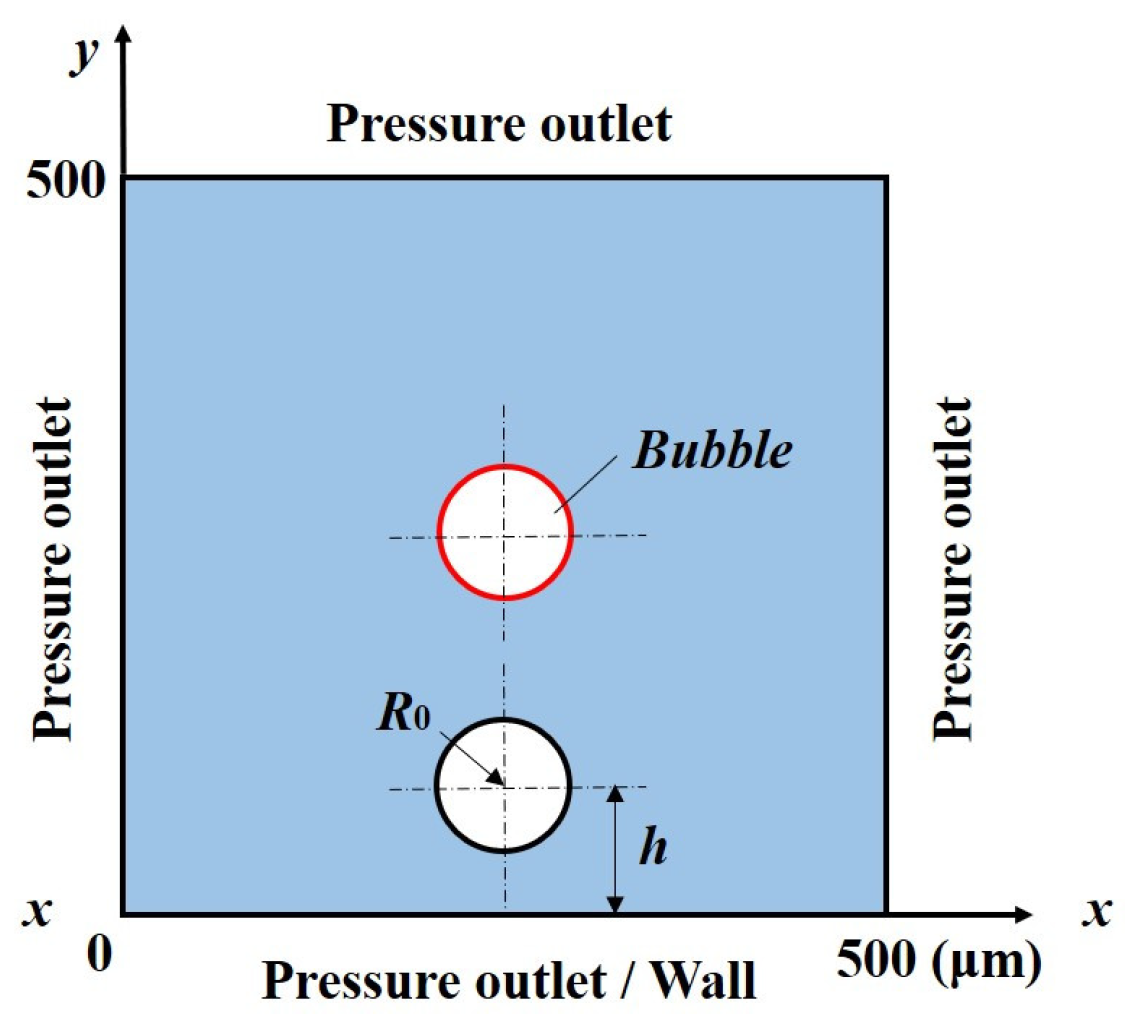

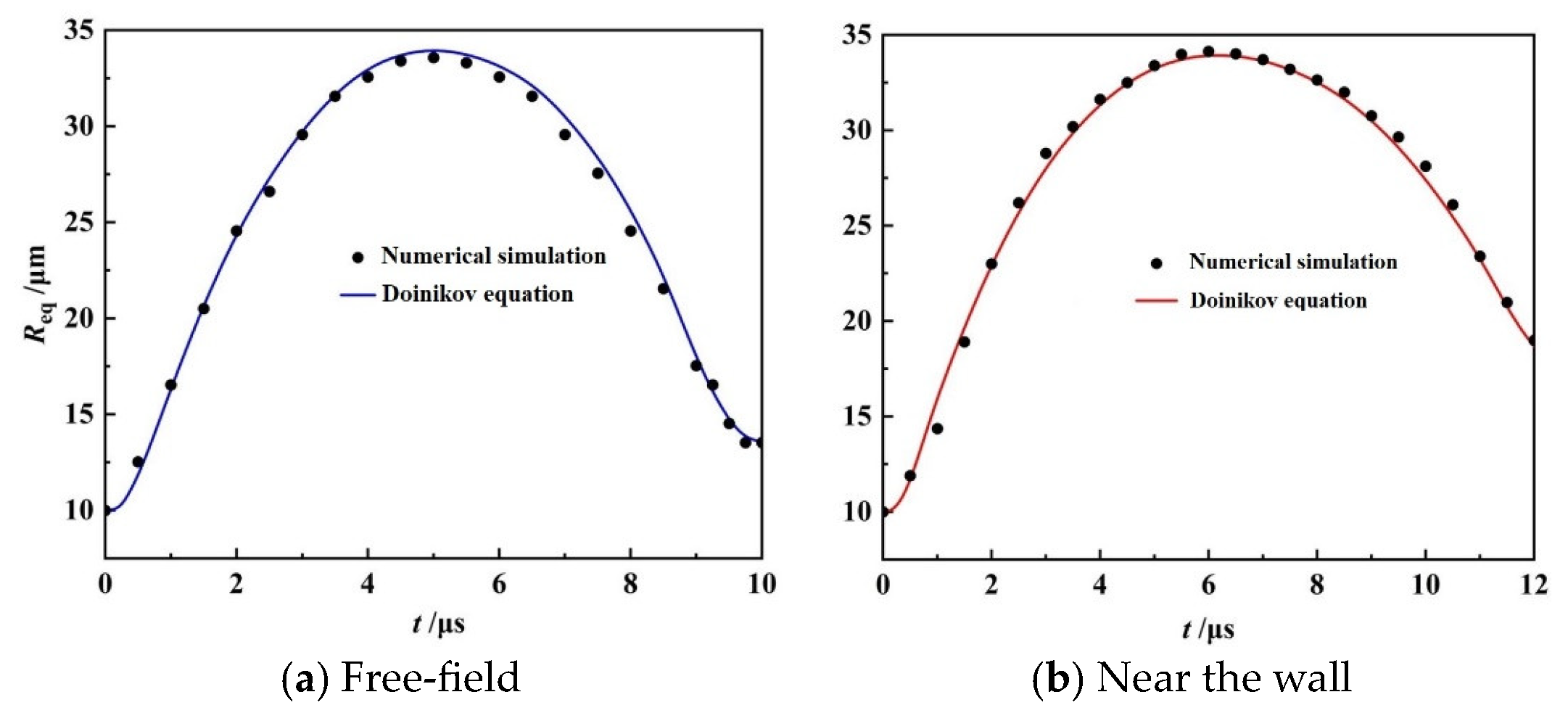
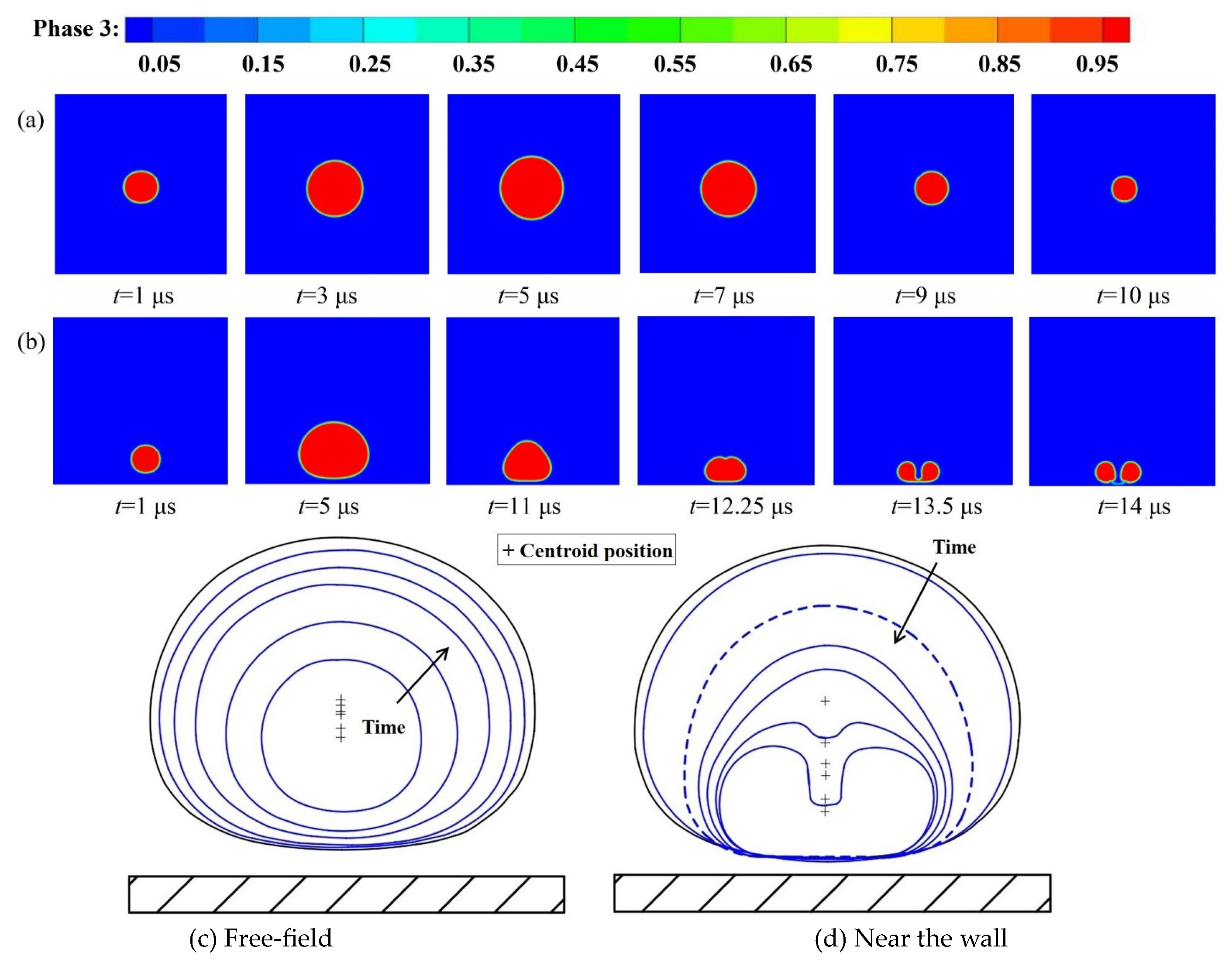
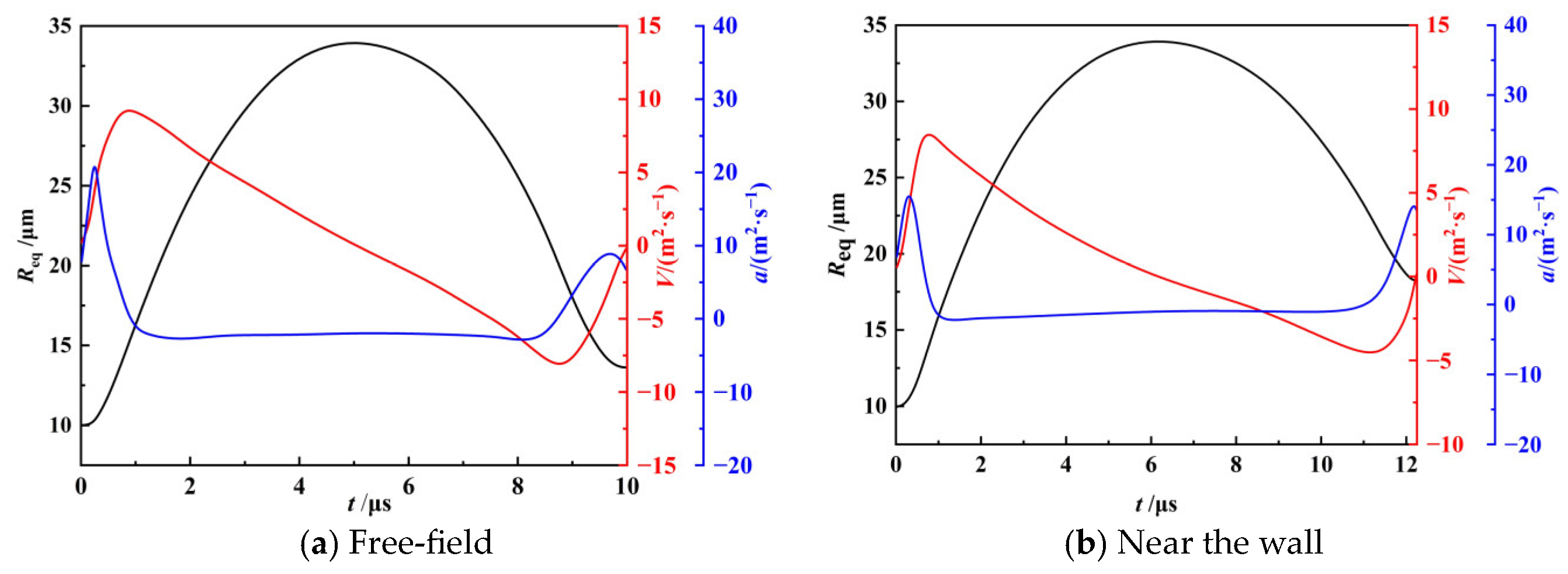

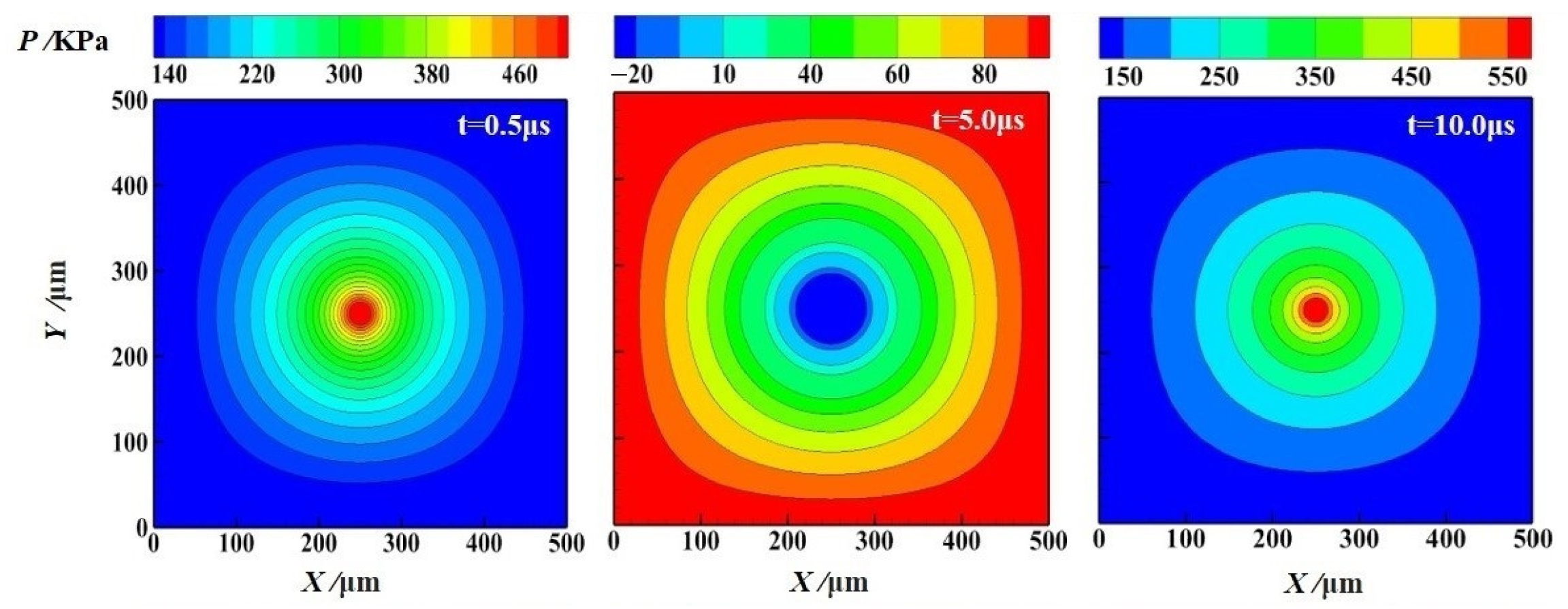
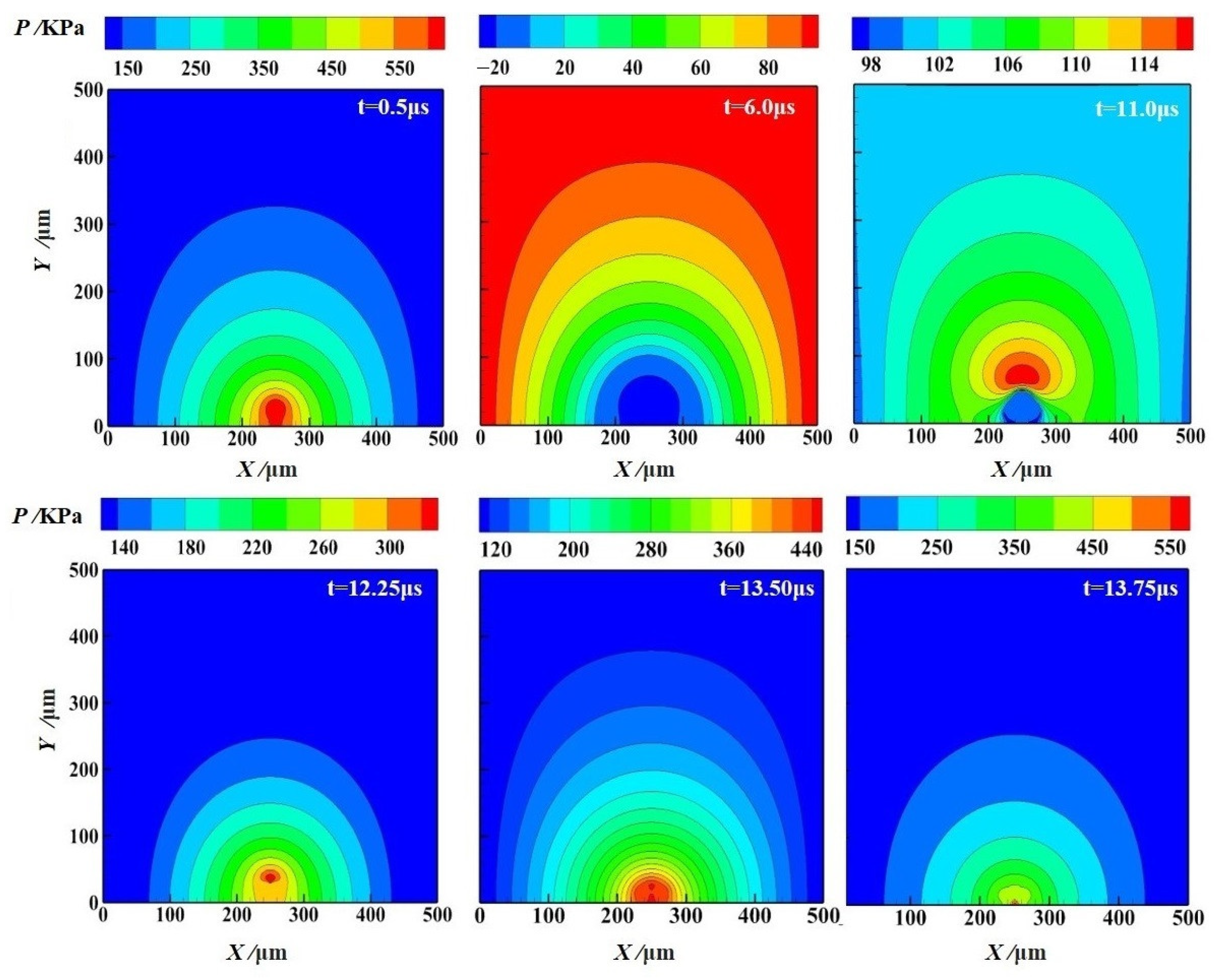
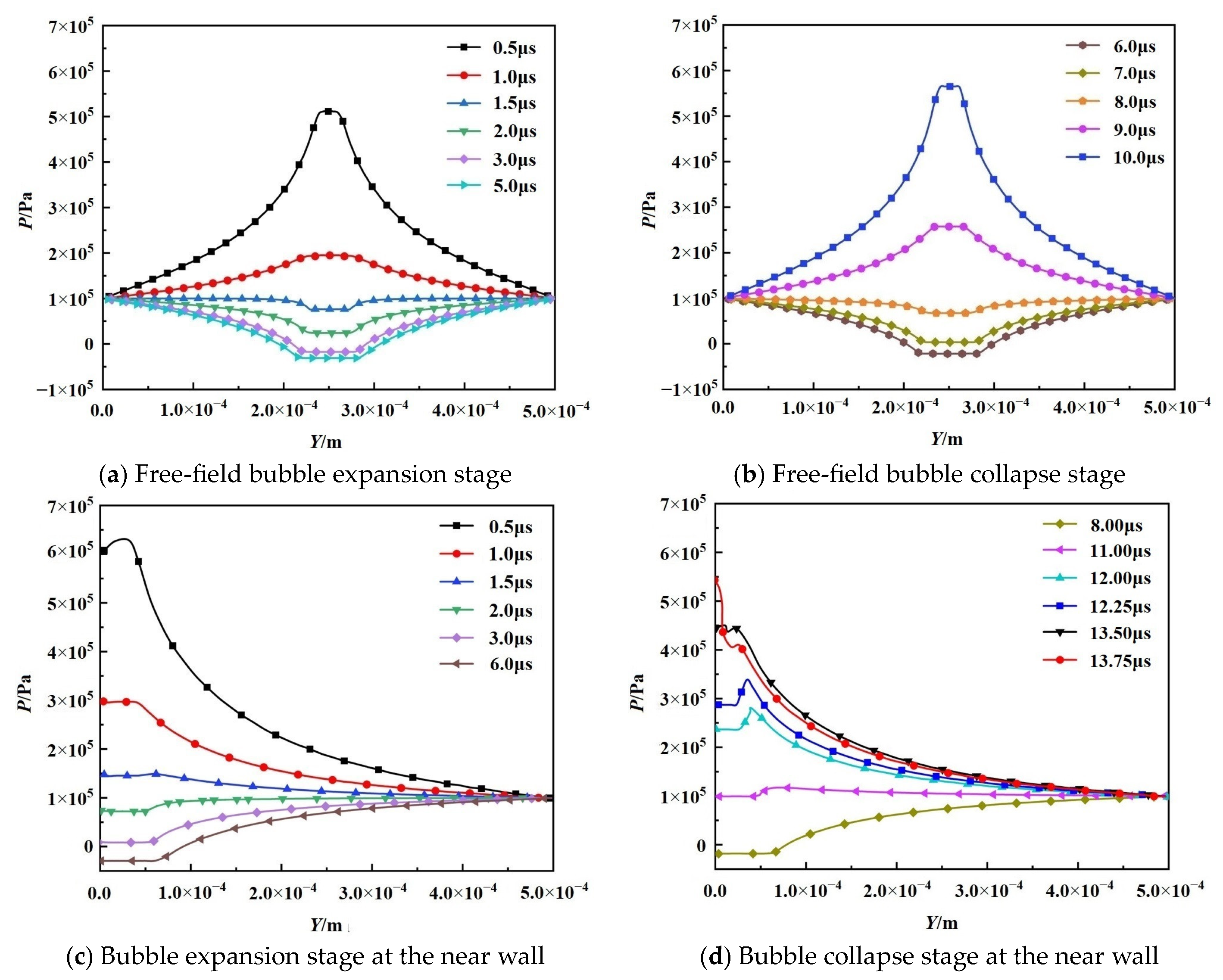
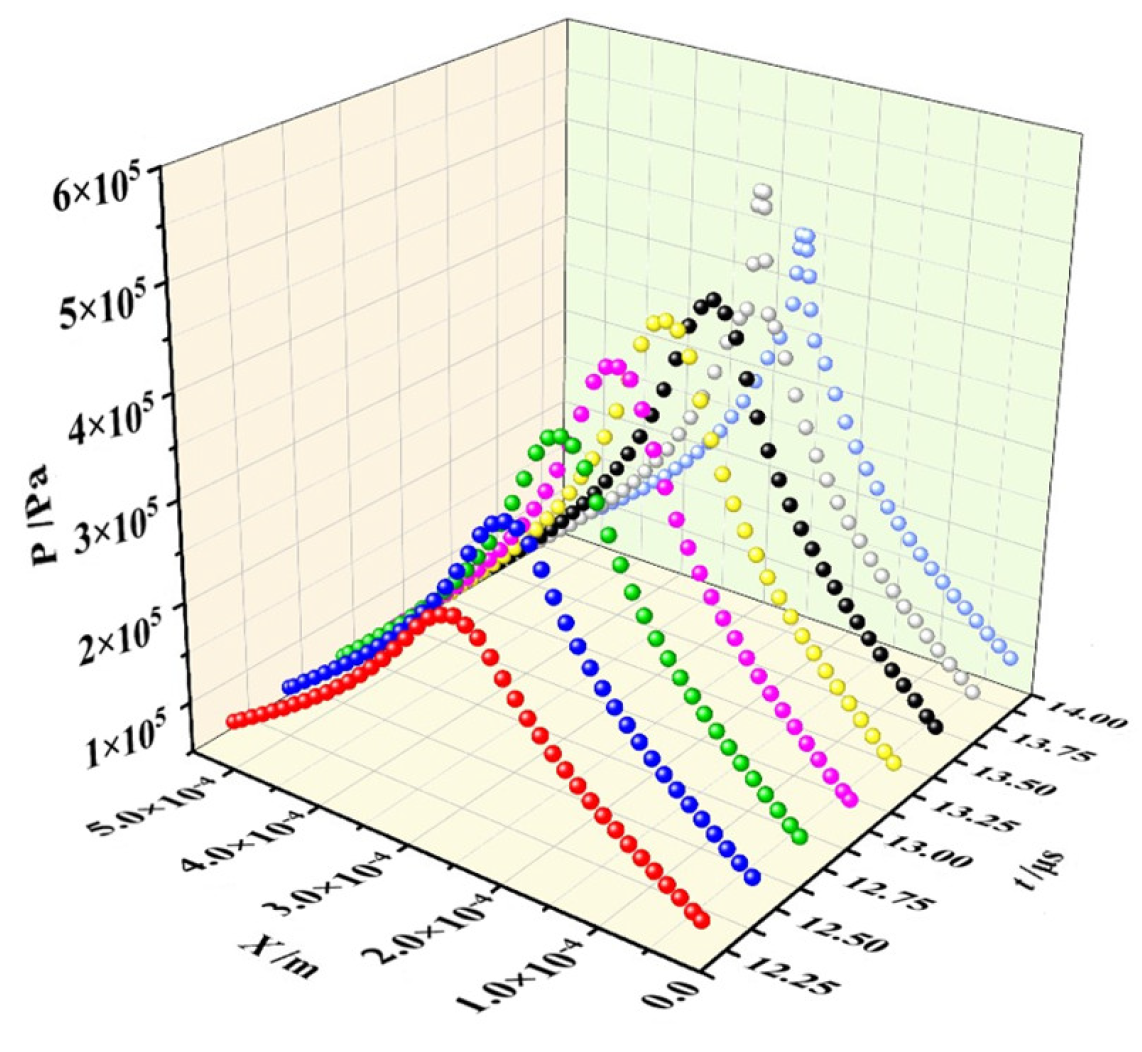
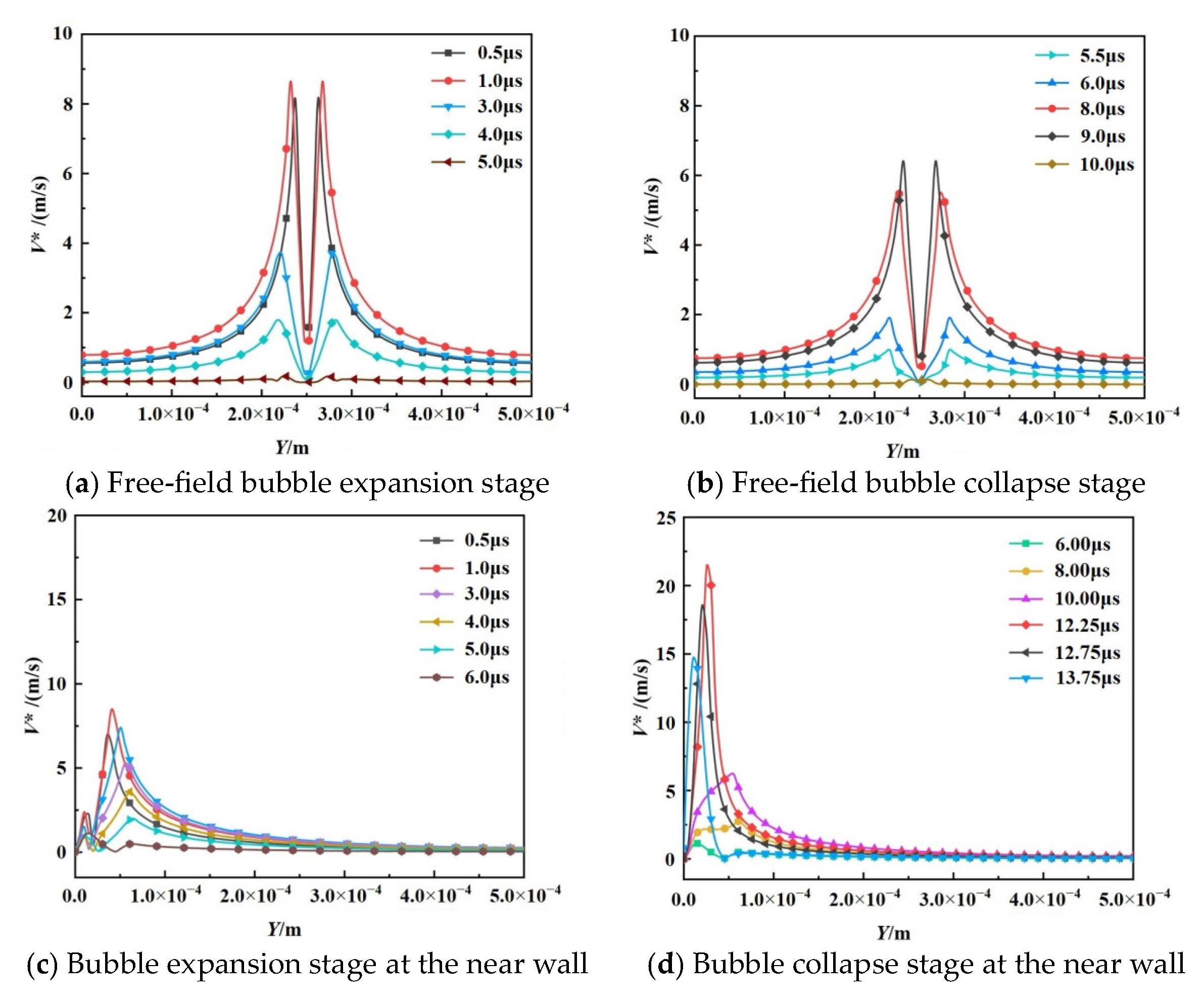


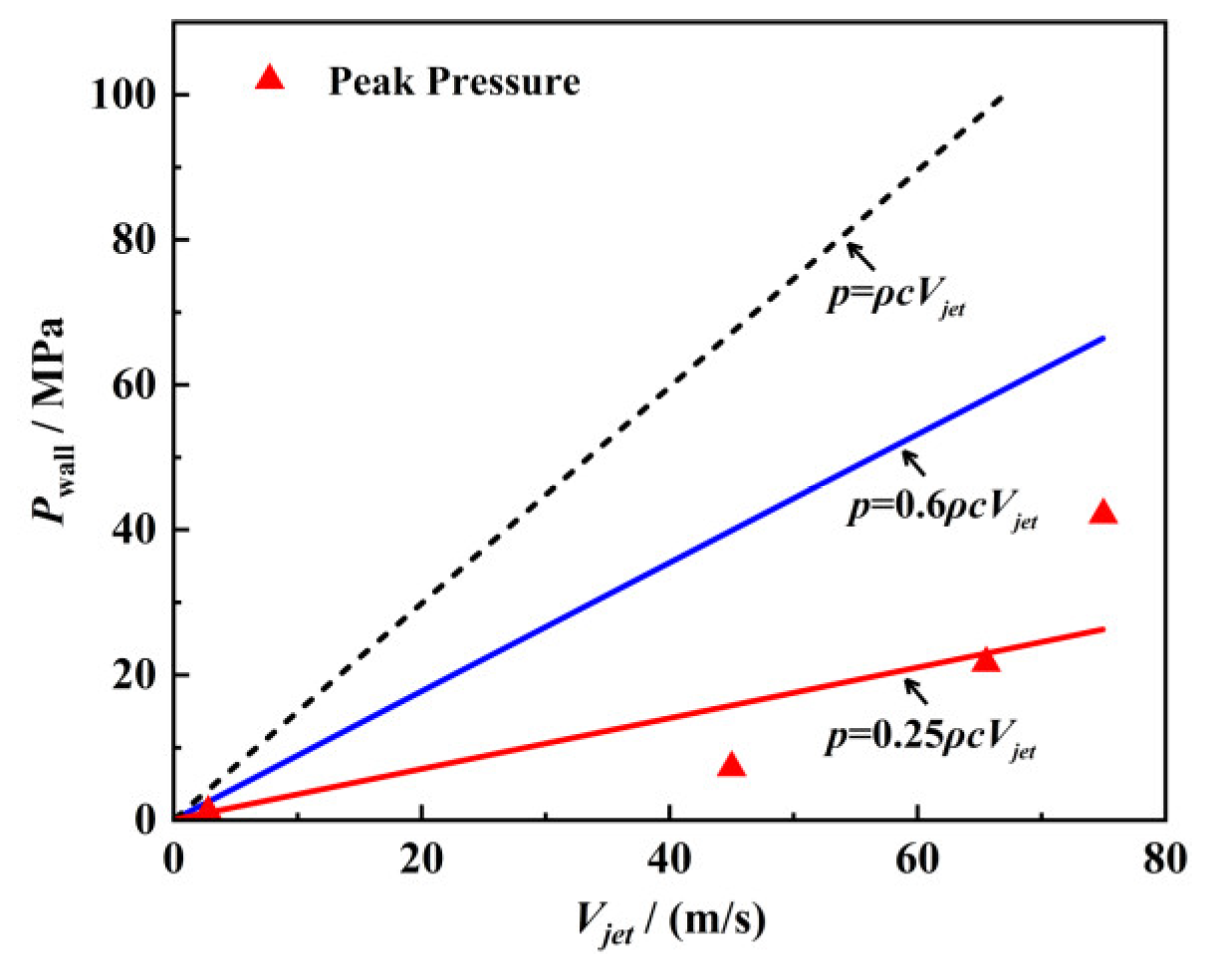
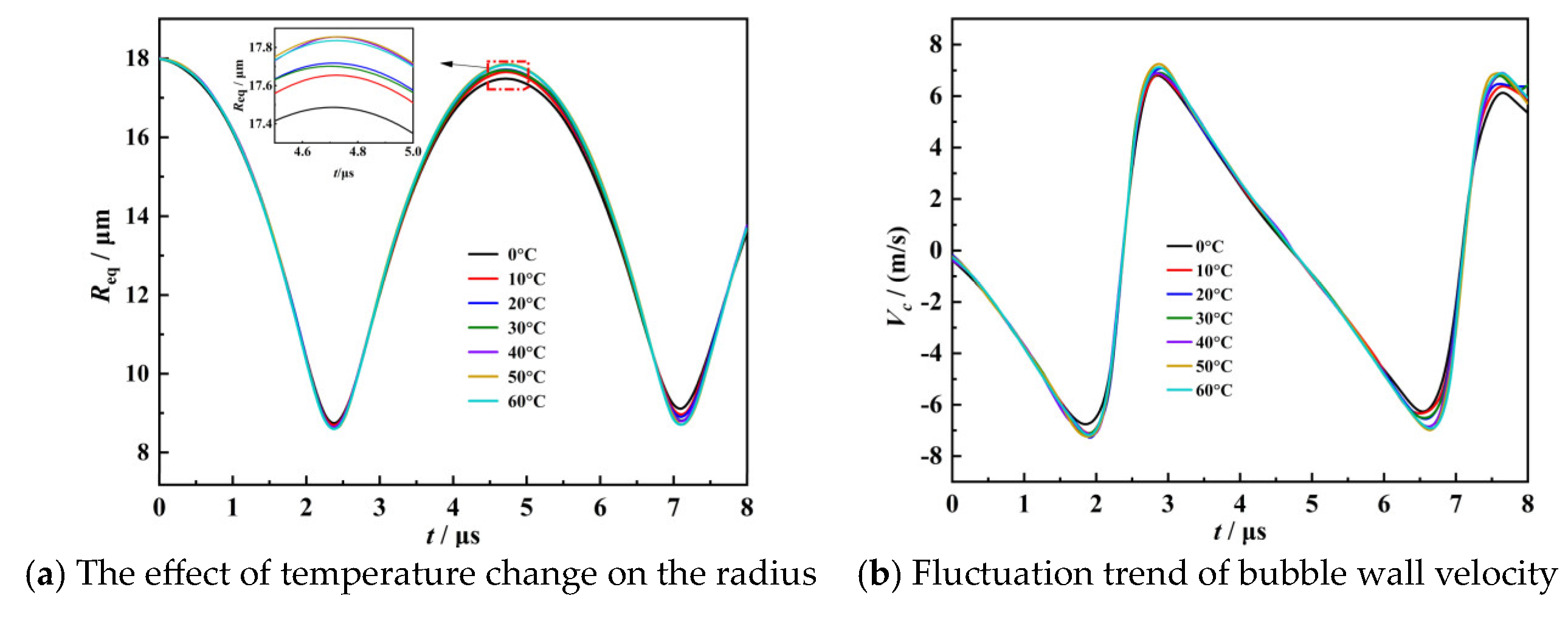

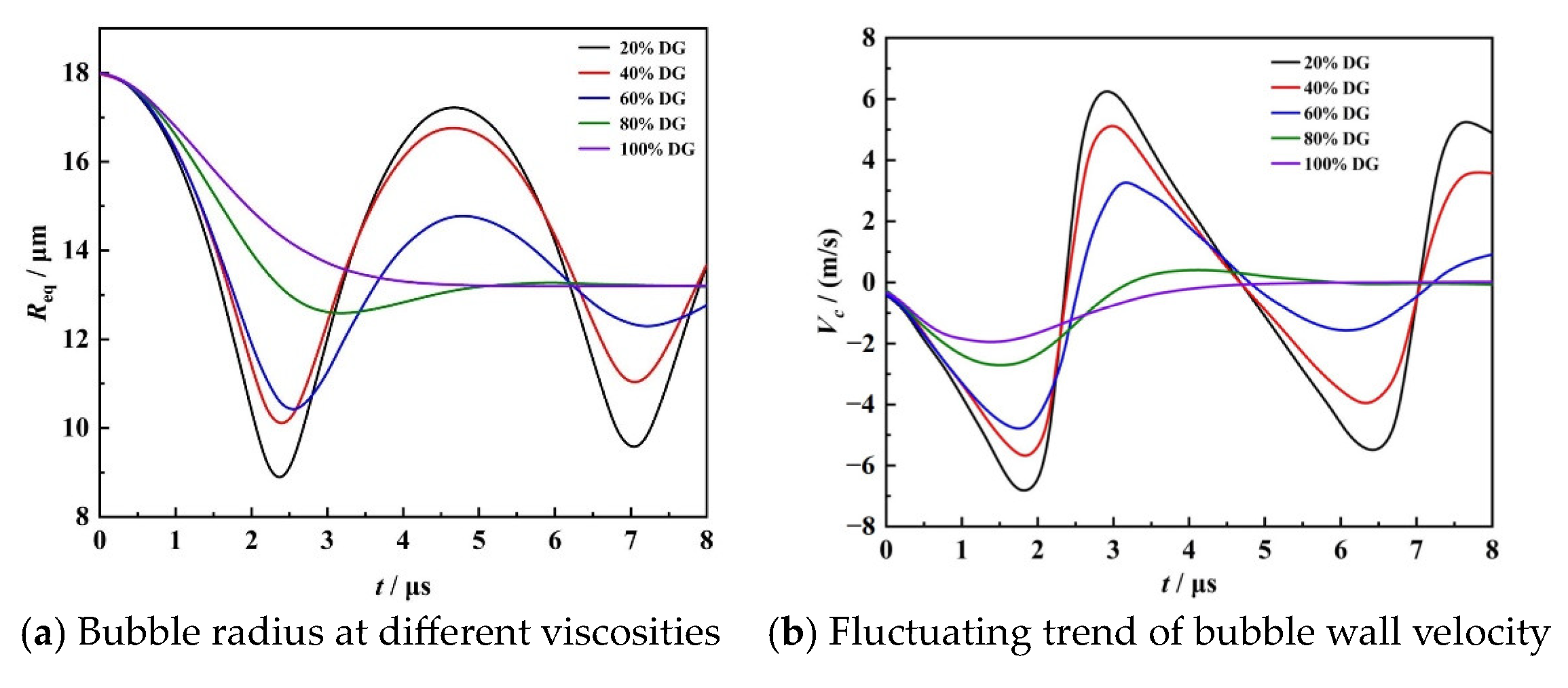
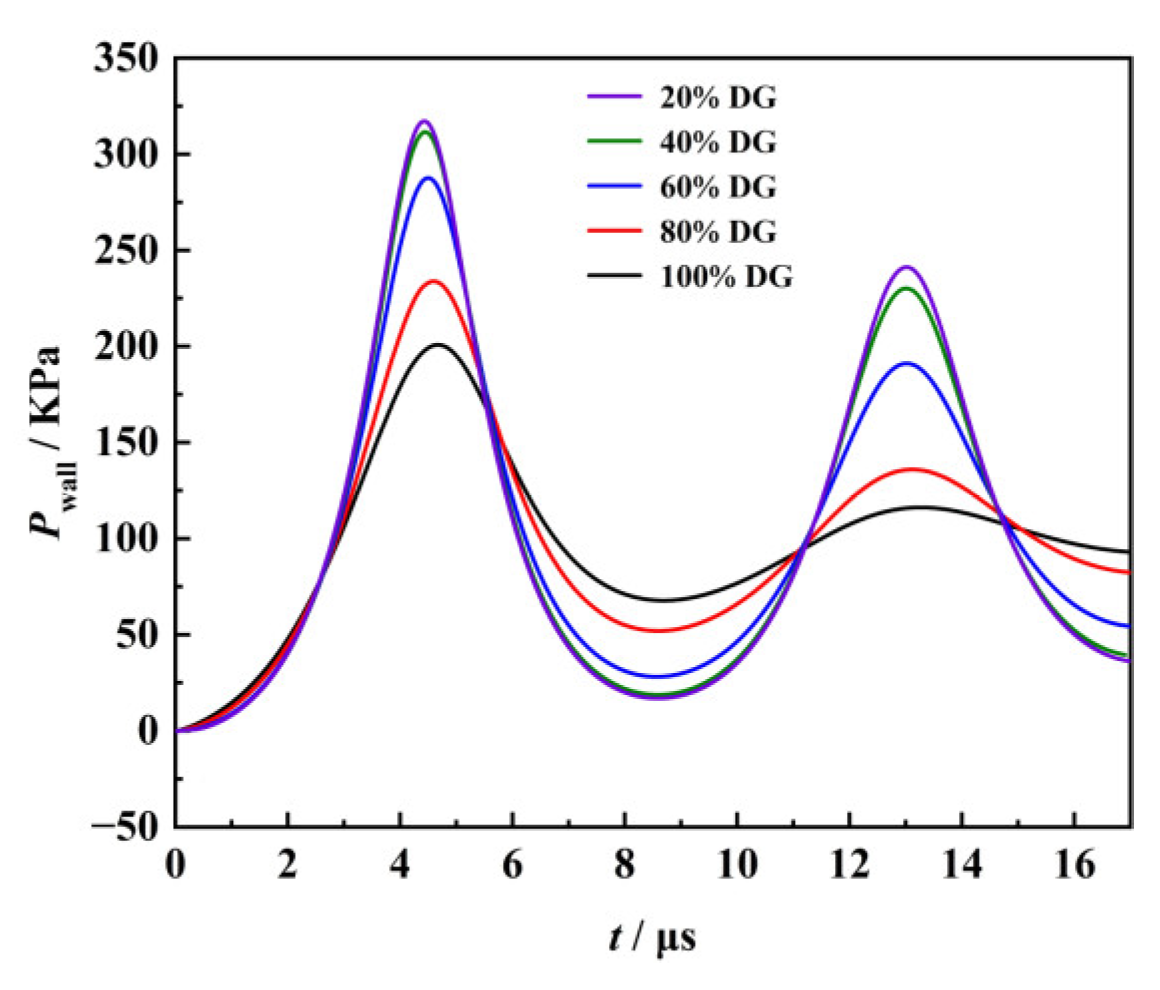


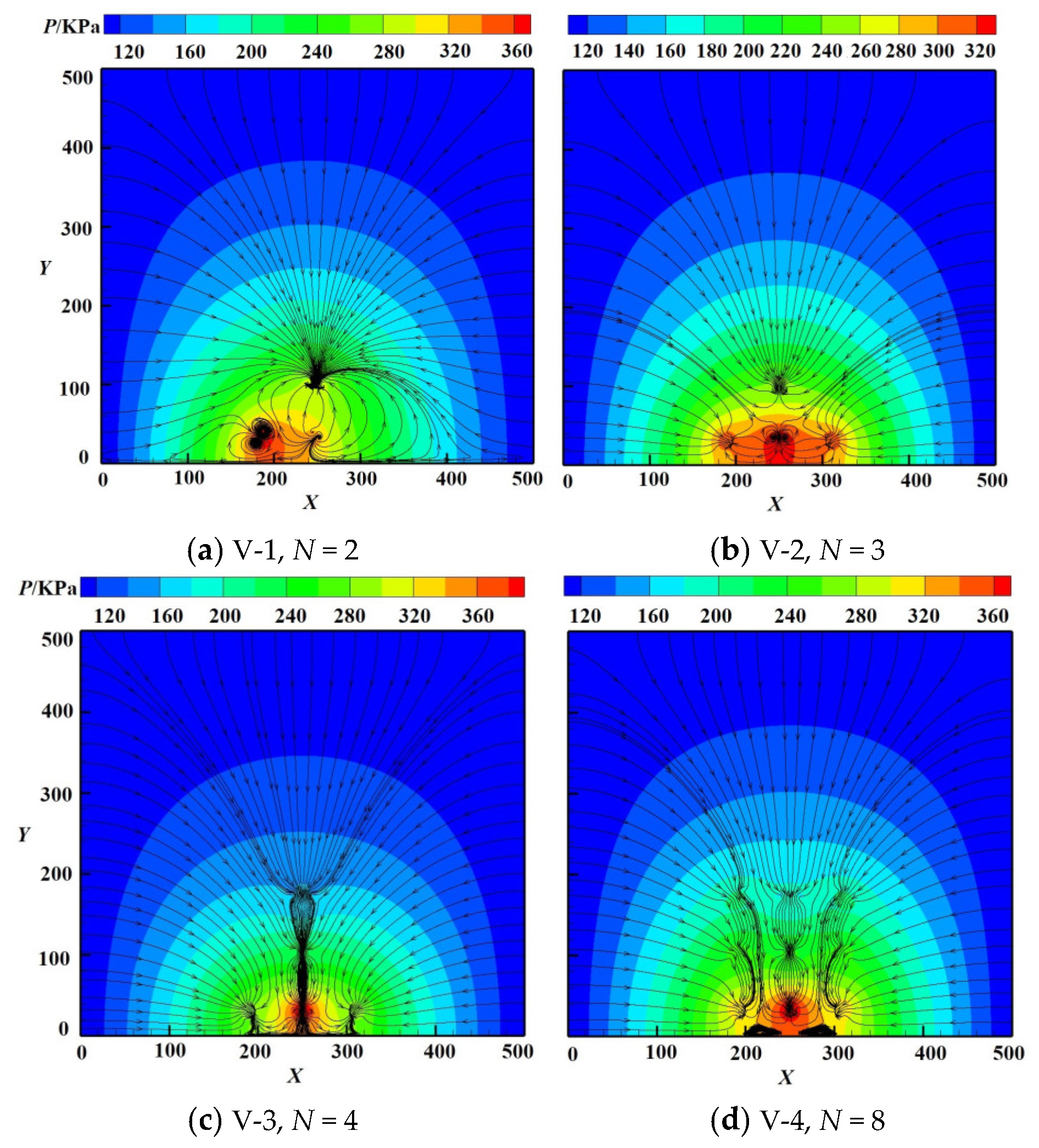

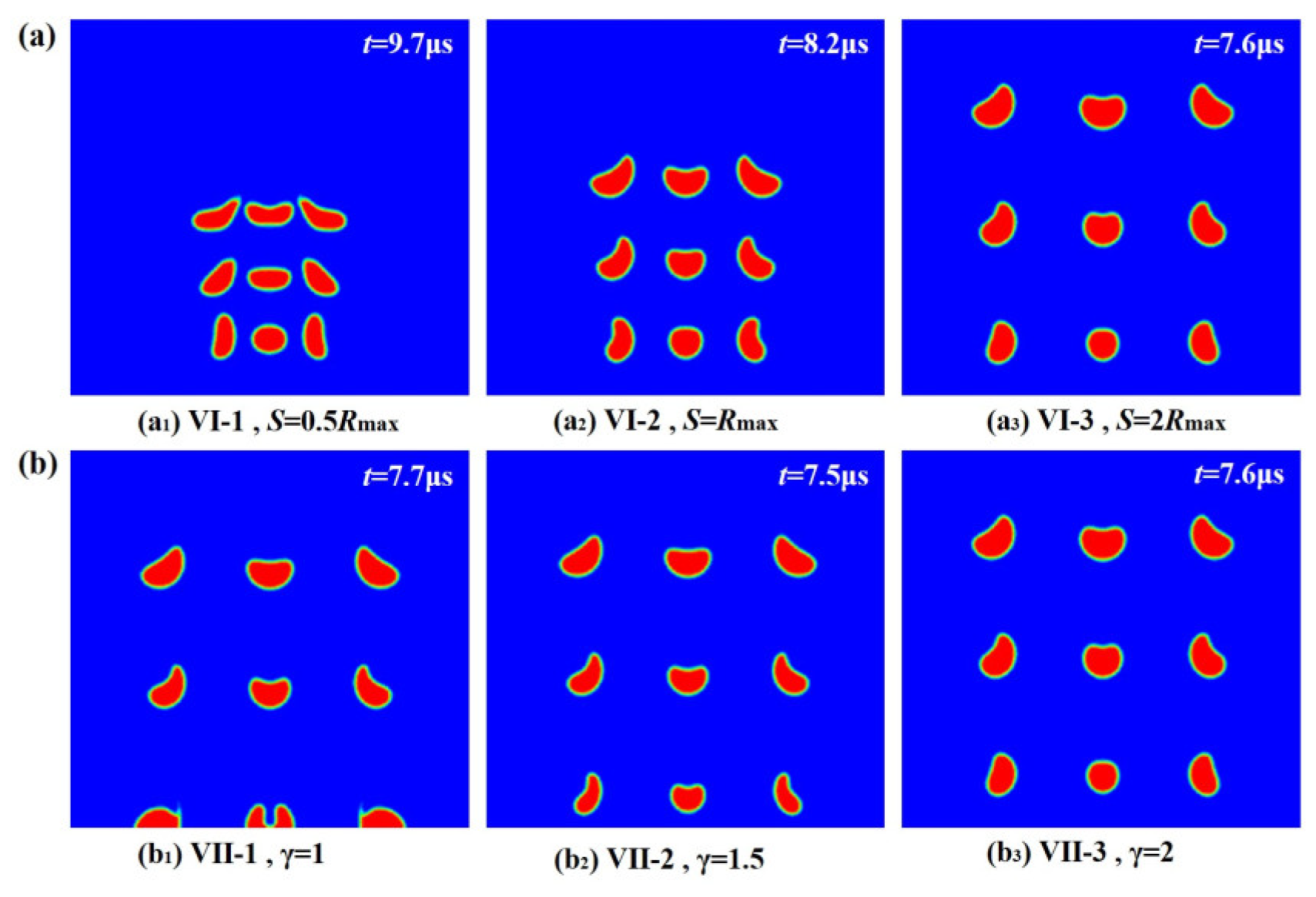
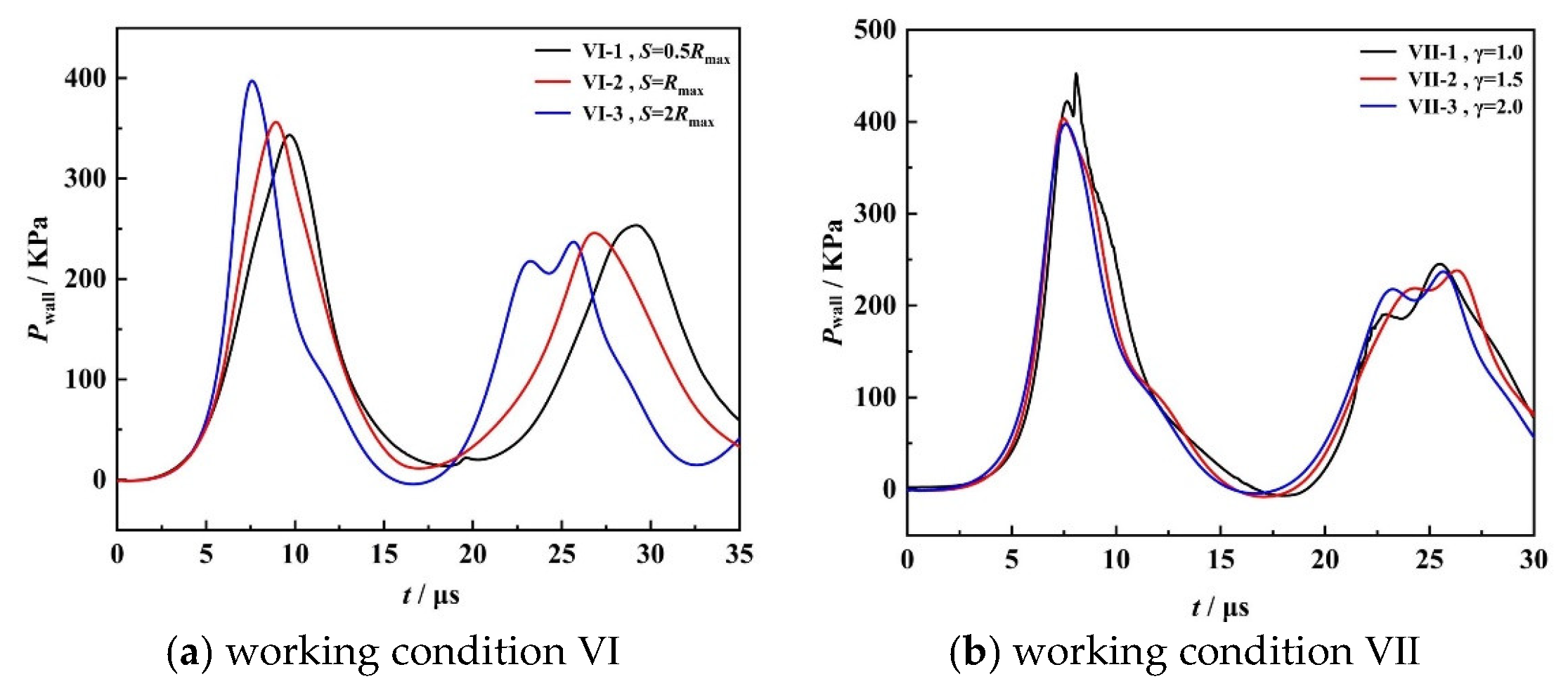
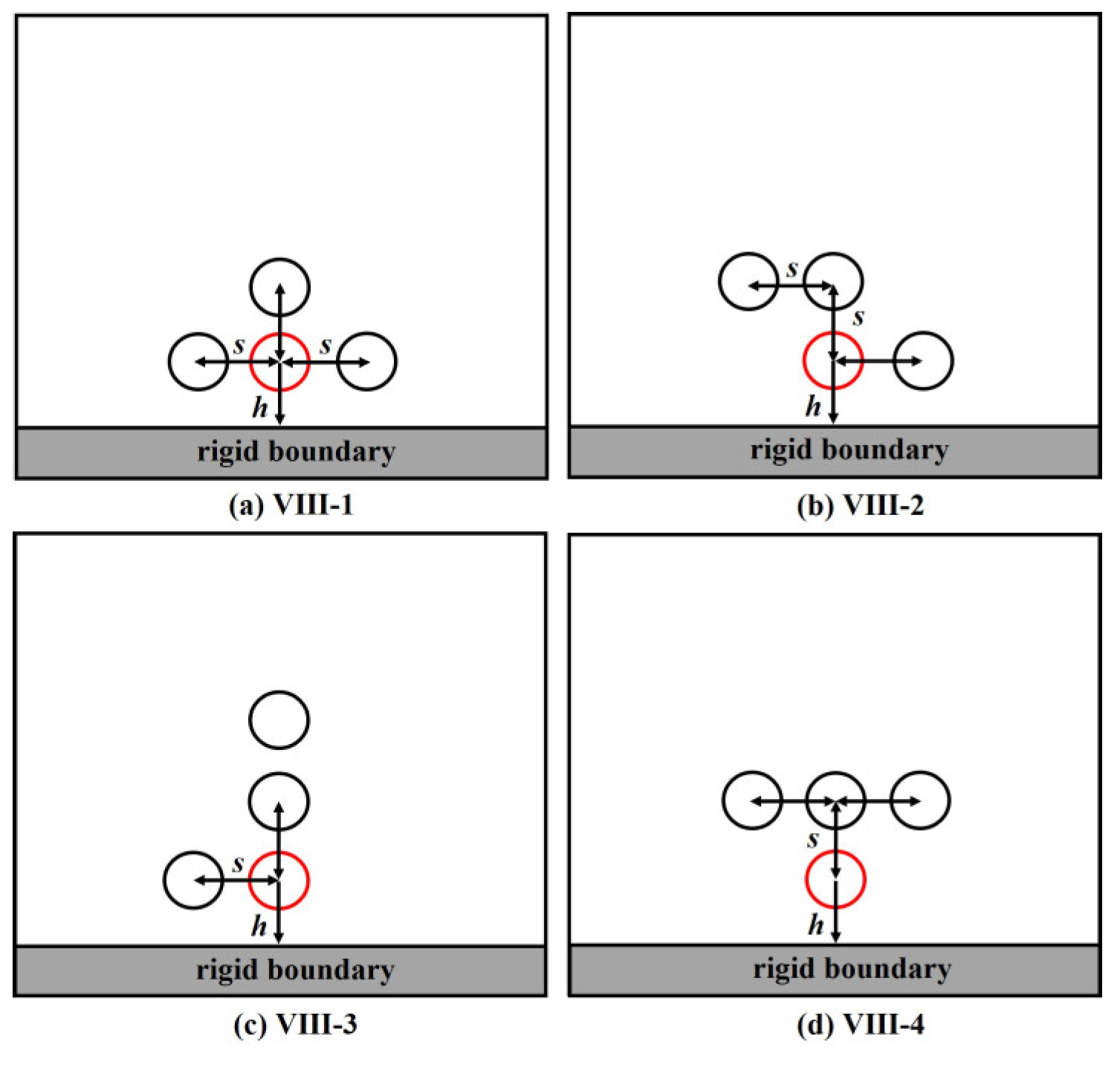

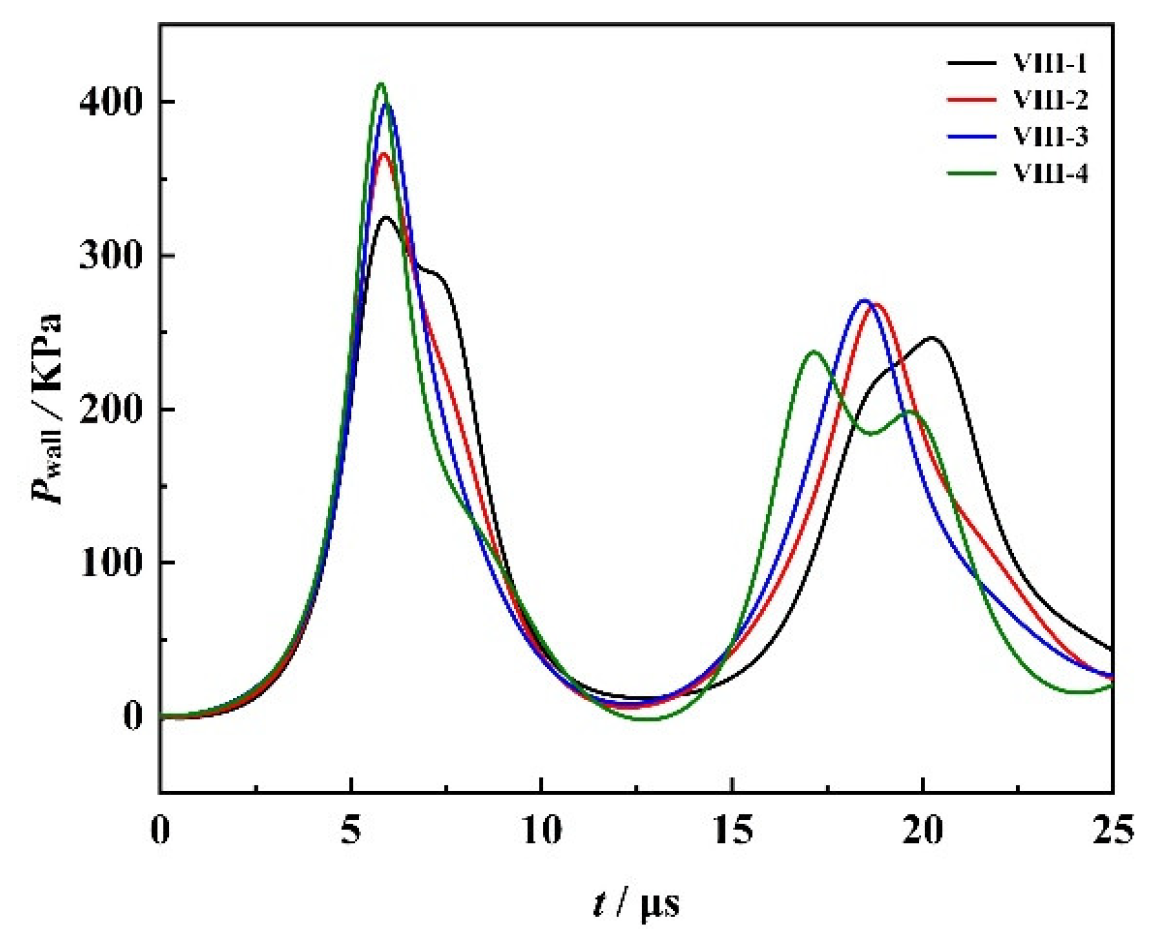
| Pd (MPa) | 0.1 | 0.25 | 0.5 | 0.75 | 1 |
|---|---|---|---|---|---|
| t (μs) | 3.17 | 2.84 | 1.96 | 1.55 | 1.33 |
| Vjet (m/s) | 4.75 | 21.13 | 45.52 | 67.43 | 74.90 |
| Pwall (MPa) | 0.15 | 1.44 | 7.10 | 22.26 | 43.62 |
| Temperature T (°C) | 0 | 10 | 20 | 30 | 40 | 50 | 60 |
|---|---|---|---|---|---|---|---|
| Surface tension coefficient σ (N/m) | 0.0756 | 0.0742 | 0.0728 | 0.0712 | 0.0696 | 0.0679 | 0.0662 |
| Viscosity coefficient μ × 10−3 (Pa·s) | 1.785 | 1.306 | 1.003 | 0.8 | 0.658 | 0.553 | 0.474 |
| Distilled Water/Glycerol (%DG) | 20% | 40% | 60% | 80% | 100% |
|---|---|---|---|---|---|
| Viscosity coefficient μ(Pa·s) | 0.00314 | 0.00595 | 0.02052 | 0.067 | 0.110 |
| Condition | Number | S | h | γ | Schematic Diagram |
|---|---|---|---|---|---|
| Working condition VI | Ⅵ-1 | 0.5 Rmax | 2 Rmax | 2 | 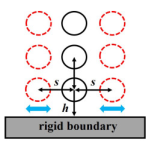 |
| Ⅵ-2 | Rmax | 2 Rmax | 2 | ||
| Ⅵ-3 | 2 Rmax | 2 Rmax | 2 | ||
| Working condition Ⅶ | Ⅶ-1 | 0.5 Rmax | 2 Rmax | 2 |  |
| Ⅶ-2 | 0.5 Rmax | 1.5 Rmax | 1.5 | ||
| Ⅶ-3 | 0.5 Rmax | Rmax | 1 |
Disclaimer/Publisher’s Note: The statements, opinions and data contained in all publications are solely those of the individual author(s) and contributor(s) and not of MDPI and/or the editor(s). MDPI and/or the editor(s) disclaim responsibility for any injury to people or property resulting from any ideas, methods, instructions or products referred to in the content. |
© 2023 by the authors. Licensee MDPI, Basel, Switzerland. This article is an open access article distributed under the terms and conditions of the Creative Commons Attribution (CC BY) license (https://creativecommons.org/licenses/by/4.0/).
Share and Cite
Liu, B.; Zhao, H.; Li, C.; Guan, H.; Wang, F. Research on the Mechanism and Control Strategy of Microbubble Cleaning Sludge. Processes 2023, 11, 2915. https://doi.org/10.3390/pr11102915
Liu B, Zhao H, Li C, Guan H, Wang F. Research on the Mechanism and Control Strategy of Microbubble Cleaning Sludge. Processes. 2023; 11(10):2915. https://doi.org/10.3390/pr11102915
Chicago/Turabian StyleLiu, Bing, Haitao Zhao, Changjiang Li, Heng Guan, and Fengde Wang. 2023. "Research on the Mechanism and Control Strategy of Microbubble Cleaning Sludge" Processes 11, no. 10: 2915. https://doi.org/10.3390/pr11102915





